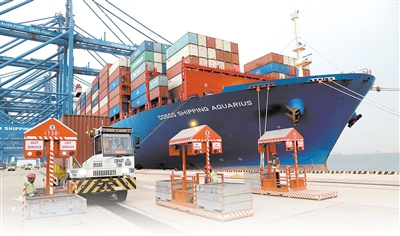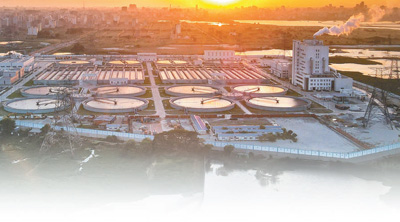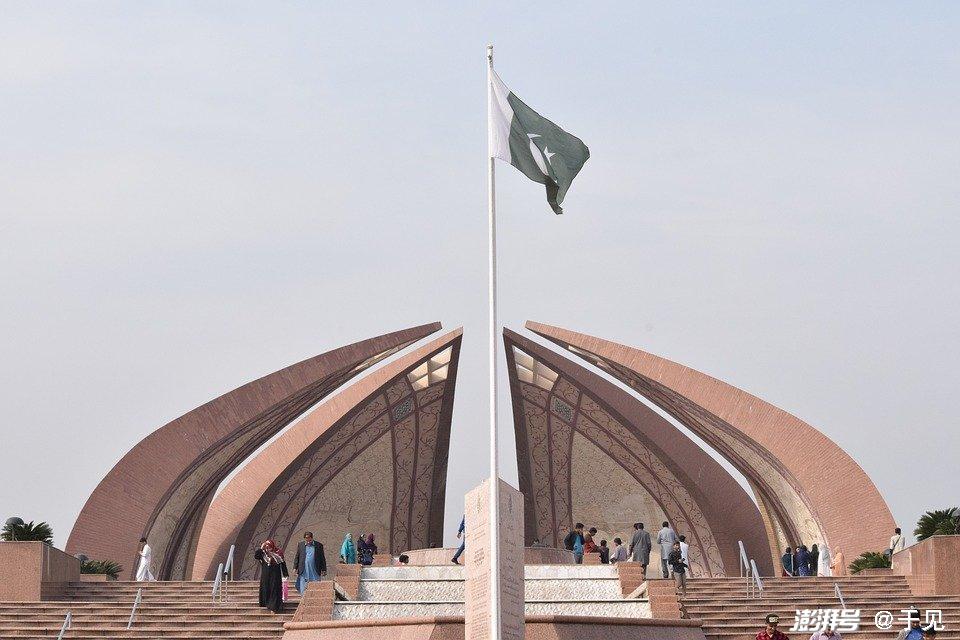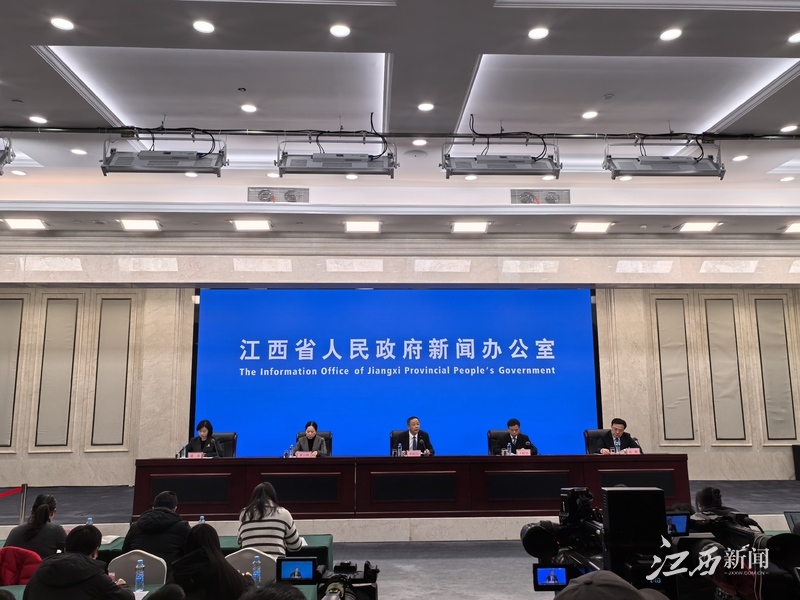How To Achieve Multilateralization Of The "Belt And Road" | CCG Research
How To Achieve Multilateralization Of The "Belt And Road" | CCG Research
The initiative to jointly build the "Belt and Road" comes from China, belongs to the world, is rooted in history, and is more oriented towards the future. In the past eight years, the Belt and Road Initiative has gone through a process of development from initiatives to consensus, vision to action, bilateral to multilateral

The initiative to jointly build the "Belt and Road" comes from China, belongs to the world, is rooted in history, and is more oriented towards the future. In the past eight years, the Belt and Road Initiative has gone through a process of development from initiatives to consensus, vision to action, and from bilateral to multilateralism. It has now become an important force in opposing trade protectionism, maintaining multilateralism and supporting free trade. Only by adhering to an open attitude and further multilateral development, the "Belt and Road" platform can achieve standardized and open development in all aspects such as rule formulation, personnel composition, organizational management, and project implementation, can we attract more countries to participate in the construction of the "Belt and Road", expand development space, and create more opportunities for the recovery and development of the world economy.
Establishment and operation of multilateral mechanisms
The Asian Infrastructure Investment Bank represents the active development of global multilateralism in difficult situations, which is very inspiring to the development of the "Belt and Road". On June 11, 2019, AIIB Vice President Aiding introduced the multilateral experience of AIIB in a speech at the Globalization Think Tank (CCG). The AIIB respects diversity in its organizational structure. 230 full-time employees come from 44 countries and regions, of which the decision-making level is composed of 12 directors representing different countries; among the executive team, only the president comes from China, and the five vice presidents come from five different countries including the United Kingdom, France, and India. Through a multilateral organizational structure, the AIIB can ensure maximum fairness and justice in decision-making. In actual operations, the Asian Infrastructure Investment Bank is good at using innovative methods to raise and invest. At the beginning of its establishment, the AIIB cooperated with the World Bank, the Asian Development Bank and other institutions, and innovatively used private capital to solve financing problems through issuance of securities, so that infrastructure construction, a "new dividend" of global economic development, benefit countries around the world.
Referring to the multilateralization model of the Asian Infrastructure Investment Bank, we believe that the establishment and operation of the "Belt and Road" multilateral mechanism can be promoted from the following aspects.
First, build a multilateral mechanism for organizational structure and decision-making management, and normalize it to strengthen the attributes of international public products of the "Belt and Road". For example, establish the International Committee of the Belt and Road Initiative, build the International Governance Mechanism of the Belt and Road Initiative, strengthen joint governance, political mutual trust and cultural exchanges; establish permanent multilateral organizations such as the International Secretariat of the Belt and Road Initiative with relevant countries, and arrange them with stable mechanisms to facilitate the orderly development and in-depth promotion of all work. It is recommended that, like G20 and APEC, hold the "Belt and Road" annual meetings in various countries in turn. Countries regularly gather together to discuss the relevant agenda of the "Belt and Road", carry out extensive exchanges and consultations on the content of cooperation, and jointly promote the orderly development of the "Belt and Road" at all stages through agreements, planning, mechanisms, projects, etc.
The second is to expand multilateral cooperation objects under the framework of the United Nations and establish the connection between the "Belt and Road" and the main governance institutions under the framework of the existing international order. For example, establish the United Nations "Belt and Road" agency to give full play to the United Nations' role as a bridge and international influence, maximize the use of its efficiency enhancement role, and promote dialogue among countries participating in the "Belt and Road". At the same time, attract more institutions under the United Nations system to participate, connect the concept of the "Belt and Road" with the United Nations Development Program, UNESCO, etc., and turn the concept of the "Belt and Road" into the relevant agenda of these international organizations. We can strengthen cooperation with international institutions such as the World Bank, the IMF, the International Organization for Migration, and the International Labor Organization to give full play to the role of the "Belt and Road" in global governance. The Globalization Think Tank (CCG) held an official border meeting on the theme of "One Belt, One Class" during the 55th Munich Security Conference in 2019. At the meeting, Kristalina Georgieva, then acting president and CEO of the World Bank, believes that there is a good way to crack the international community's doubts and attacks on the "One Belt, One Road", that is, let the World Bank, as a third-party institution, conduct third-party evaluations for the "One Belt, One Road" project, which can greatly improve the feasibility and transparency of the "One Belt, One Road" project and reduce external misjudgments.
The third is to attract more developed countries to participate and broaden the extension of the "Belt and Road". The "Belt and Road" is a public product provided by China to the world. It should not be a combination of developing countries. It should also invite developed countries to participate, expand the extension of the "Belt and Road" and seek partners with more international experience. For example, at the theme dinner jointly held by the Globalization Think Tank (CCG) and the 56th Munich Security Conference, former US Secretary of State John Kerry said that China and the United States can strengthen cooperation on the "Belt and Road" initiative. In 2019, the National Development and Reform Commission of China issued the "Guidelines and Cases for Third-Party Market Cooperation", which is a new model for China to cooperate with developed countries in project cooperation in third-party markets. At present, China has signed third-party market cooperation documents with developed countries such as France, Japan, Canada, and Italy, and has successively carried out a series of cooperation. In the future, we need to continue to expand third-party market cooperation, promote third-party cooperation between China, the investment countries, developed economies and other economies, and promote the sustainable development of the "Belt and Road". In addition, our country needs to establish cooperation with key countries at the "Belt and Road" level, and open up the guidance of the "Belt and Road" level at the national level. For example, Britain's active participation in the "Belt and Road" is not only exemplary, but also to a certain extent means the changes in the international landscape and the opening of a new model of globalization.
Connect with existing regional mechanisms and international rules
Thousands of years ago, almost the same period when Zhang Qian opened up the "Silk Road", there was also a "Amber Road" that brought about prosperity in commerce in Central and Eastern Europe. The "Amber Road" is connected with the "Silk Road" and together form a major channel for the exchange of civilizations in the East and the West. Thousands of years later, China has proposed the "Belt and Road" initiative, and Central and Eastern European countries have received enthusiastic responses because it fits the vision of these countries in reviving the "Amber Road". aAfter China proposed the "Belt and Road" initiative, Mongolia proposed the "Grassland Road" initiative, and Turkey launched the "Intermediate Corridor" initiative... The development of the "Belt and Road" is a long-term process that requires unremitting efforts. China proposed in the vision of the "Belt and Road" that it hopes to gradually form regional cooperation with countries that agree with this concept, from point to surface, from line to piece.
In 2014, China proposed to connect the "Silk Road Economic Belt" with the "European Economic Union" and Mongolia's "Grassland Road" initiative to build the China-Mongolia-Russia Economic Corridor. In June 2016, the "Outline of the Planning for Building the China-Mongolia-Russia Economic Corridor" was signed, becoming the first multilateral cooperation planning outline under the framework of jointly building the "Belt and Road". In September of the same year, the first bilateral cooperation plan under the framework of the joint construction of the "Belt and Road" initiative, "Cooperation Plan for the Docking of the "Silk Road Economic Belt" and the "Bright Road" New Economic Policy Docking" was also officially signed.
In September 2018, the EU issued the Eurasian Connectivity Strategic Policy Document "Connecting Europe and Asia - Ideas for the EU Strategy". The document actively evaluates the significance of Eurasia connectivity and its role in promoting Eurasia's economic growth, proposes to strengthen land transportation connections in Eurasia, advocates "comprehensive, sustainable and rules-based connectivity", and expresses its willingness to strengthen cooperation with Asian countries, including China. Before the Eurasian Connectivity Plan was introduced, the Globalization Think Tank (CCG) was invited by the European Commission to attend the Asia-Europe Interconnection System Argument Conference twice, discussing the Asia-Europe Connectivity Theory System with experts from various countries, and formulating a new visibility index standard for globalization. Many suggestions we have put forward in the field of humanities have been adopted by the European Commission as the basis for adjusting the framework and forming a new visibility index standard. In December of the same year, China released the latest "European Policy Document", which also proposed to promote the construction of China-Europe connectivity platforms and strengthen the docking of the joint construction of the "Belt and Road" initiative with the EU's Eurasian connectivity strategy, European investment plan, and "Pan-European Transportation Network" and other development plans.
The "Belt and Road" initiative is in line with the Eurasian connectivity strategy and provides a new entry point for the docking of development strategies between the two sides. In the future smooth progress of the construction of the "Belt and Road" construction, we must make full use of the existing multilateral/bilateral cooperation mechanisms, innovate cooperation methods, deepen and make good use of the existing cooperation platforms, and effectively connect major plans and projects. In addition to actively promoting the implementation of signed cooperation plans, the "Belt and Road" also needs to continue to strengthen the docking of other regional plans, such as Turkey's "intermediate corridor", Vietnam's "two corridors and one circle", Britain's "Northern Economic Center of England", and Poland's "Amber Road", etc., through docking with global rules, it will be built into a public platform for international cooperation.
In addition, the construction of the "Belt and Road" involves huge loans. If China's lending in accordance with international common rules, it can greatly relieve the international community's doubts about the "Belt and Road" initiative. As an emerging creditor country, China still lacks experience in effectively controlling external debt risks. The Paris Club is a regular communication mechanism for the major creditor countries. China may consider joining the Paris Club and follow the international lending rules of transparent, feasible and sustainable lending and becoming a responsible creditor country. This move will help prevent the external debt risks faced by China and ensure global financial stability.
On June 13, 2021, under the initiative of US President Biden, an initiative called "Build Back World" (B3W) was written into the joint statement at the closing ceremony of the G7 summit in Cornwall, UK. This is an expected costly "global infrastructure plan". With "assisting middle-income and low-income countries to build infrastructure" as the core goal of publicly declared, focusing on four "high-quality areas" of climate change, health and safety, digital technology, and gender equality. On the basis of integrating various existing programs including the "Blue Dot Network" plan, the arm span will be extended to Latin America, the Caribbean, Africa, and the Indo-Pacific region, and will promote specific cooperative projects through "strong strategic partnerships". aSubsequently, the EU also issued a statement in July, saying that it will implement a strategy called "Global Connection Europe" starting from 2022 and build a global infrastructure construction network centered on Europe.
Although the United States and the West have the intention to hedge the "Belt and Road" in launching infrastructure plans such as B3W, it is not irreconcilable with the "Belt and Road", and cooperation with China will inevitably occur. Global infrastructure is a field of international cooperation with broad consensus and relatively urgent and grand. The "Belt and Road" can be connected and cooperated with infrastructure plans such as B3W proposed by the United States and the West, and jointly improve the global infrastructure level through paths such as complementary advantages, healthy competition and third-party market cooperation. China can also fully uphold an open and inclusive learning and acceptance attitude, welcome the infrastructure plan it proposed and seek space for cooperation.

Build a public cooperation and service platform
Since its introduction, the construction of the "Belt and Road" has achieved initial results, received positive responses from more and more countries and international organizations, and is gradually transforming into public products that are highly recognized by the international community. aIn this context, the Belt and Road Initiative should strive to build a multi-level and multi-angle public cooperation and service platform on the basis of practicing multilateralism, covering all stakeholders, and promoting the construction of the Belt and Road Initiative towards high-quality development. In this regard, private forces or corporate forces should bear more responsibilities. The interaction and coordination between the people and the government will provide guarantees for promoting the effective implementation of the "Belt and Road".
Enterprise platform: Establish an international enterprise alliance of “Belt and Road”. Enterprises are the main body of the implementation of the "Belt and Road" construction. It is recommended to adopt an "open" franchise method to attract enterprises to respond and actively integrate into the "Belt and Road" and create the largest "Belt and Road" entrepreneur platform. Members of the alliance enterprises have built eight platforms for development, industry, border trade, science and technology, logistics, finance, tourism and cultural exchanges in the implementation of the "Belt and Road", and provided full-scale services to relevant countries and core areas of the "Belt and Road" by building a platform. On this basis, the International Enterprise Alliance can organize international forums, such as the Manufacturing Summit, the SME Summit, the Multinational Corporate and SME Cooperation Forum, etc., to exchange issues among enterprises on industries, investment, cooperation, etc. on the "Belt and Road".
Talent platform: Establish a professional contact service platform for the "Belt and Road" professionals. The in-depth implementation of the construction of the "Belt and Road" requires the support of all kinds of professionals and professional services. Only by choosing suitable professional partners and giving full play to the advantages of professionals can we effectively control the risks of various projects. At present, major professionals have mature qualification requirements for international professionals, and a number of international professional organizations have been formed, playing an important role in the relevant professional groups. We can give full play to the role of these professionals as international organizations, establish a professional contact service platform for the "Belt and Road" and focus on professionals in the construction of the "Belt and Road". The platform can learn from international experience and establish a service system for the "Belt and Road" professional talent database and system, so as to facilitate enterprises and other institutions to find suitable international talents, and professionals to find partners or develop platforms. The platform can also establish long-term strategic cooperative relations with professional associations in countries along the route to jointly promote win-win development in countries along the route.
Financial platform: Establish the "Belt and Road" International Development Bank Cooperation Alliance. The development of the "Belt and Road" requires huge financial support. Currently, relatively certain sources of funds include the Silk Road Fund, the Asian Infrastructure Investment Bank, the New Development Bank of the BRICS and the Shanghai Cooperation Organization Development Bank. On this basis, the construction of the "Belt and Road" also needs to build an international fund pool, improve the level of financial management, and explore new mechanisms for guarantee, audit, risk control and insurance. In terms of financing system, focusing on building a diversified financing system and a multi-level capital market can be led by the Asian Infrastructure Investment Bank and cooperate with global development banks such as the World Bank, the Asian Development Bank, the African Development Bank, the Inter-American Development Bank, the European Bank of Reconstruction and Development, establish the "Belt and Road" International Development Bank Cooperation Alliance, and build a "Belt and Road" construction project loan community dominated by international multilateral development banks, forming an international, standardized, open and transparent operation system with joint loans, joint contracting, and joint bidding of international multilateral development banks. While giving full play to the financing role of governments in various countries, we must also encourage private capital in various countries to enter and guide commercial equity investment funds and social funds to participate in the joint construction of the "Belt and Road".
Risk control platform: Establish an early warning or information sharing mechanism to build a "firewall" for the construction of the "Belt and Road". The non-traditional security problems existing in countries along the "Belt and Road" are prominent. Establishing a real-time and detailed risk monitoring and early warning platform for these problems is crucial to promoting the construction of the "Belt and Road". At the same time, the Eurasian hinterland is an important region for global geopolitical competition. There are different security structure levels in the region, such as the regional-level European Security Cooperation Organization, the Shanghai Cooperation Organization, the sub-regional collective security treaty organization, and the open cross-regional IAIC Conference. These existing security systems can be made full use of these existing security systems, establish multiple "firewalls", and establish a unified early warning mechanism or information sharing mechanism. At the same time, strengthening the maintenance and development of the Arctic Channel will not only save the time and cost of maritime and aviation commercial transportation, but will also be directly related to China's military, political, resource and economic security.
NGO Platform: Build dialogue platforms such as the "Belt and Road" think tank. Think tanks are an important force in today's world, gathering a large number of relevant experts and scholars, former government and former senior officials of international organizations. They have rich political, diplomatic and economic governance experience and extensive networks, and can exert strong policy influence. Through the "second-track diplomacy", think tanks promote communication and exchanges among professionals in various fields in countries and regions along the route, which will help eliminate economic and political barriers in the construction of the "Belt and Road" and promote the formation of intergovernmental consensus. Through field research, think tanks can also fully collect effective information and better put forward policy suggestions. At the same time, think tanks can also lay the foundation for win-win cooperation by strengthening international exchanges, enhancing countries and regions along the route's understanding of the "Belt and Road" and mutual trust. aIn addition, along the Belt and Road Initiative, there are many non-governmental organizations and various social forces committed to different fields. They have a huge influence on related issues in the implementation of various projects of the Belt and Road Initiative, including international and regional standardization organizations, environmental protection organizations, community development organizations, as well as various industry associations and workers' organizations. For example, giving full play to the role of various international and regional standardization organizations, promoting policy access, facility access, and trade access through standardization, supporting the construction of interconnection, and promoting the facilitation of investment and trade is a mutually beneficial and win-win move by all parties. To promote win-win international cooperation, we also need to pay attention to and strengthen dialogue and communication with various non-governmental organizations and social forces to promote the effective realization of stakeholder needs.
In the more than eight years since the "Belt and Road" initiative was proposed, it has been steadily implemented from the initiative to the action, and has received support and recognition from more and more countries and has become the world's largest international cooperation platform. In 2020, despite the impact of the new crown pneumonia epidemic, cooperation in jointly building the "Belt and Road" is still very resilient, and the Healthy Silk Road, the Digital Silk Road, and the Green Silk Road have become new highlights of cooperation. As a huge international public product, the "Belt and Road" has passed the most difficult period of its birth stage and entered a steadily advancement stage. Different stages have different "growth problems". Multilateralization is an acceptable direction for better promoting the construction of the "Belt and Road" at present and in the future, and is also an important way to promote the "Belt and Road" towards high-quality development.
From an economic and trade perspective, the BRICS, China-Africa and China-Latin America relations are largely an extension of the "Belt and Road" initiative within a geographical scope. Only by strengthening cooperation and innovation with developing countries and building a more representative global governance platform can globalization be promoted to develop in a more inclusive and fairer direction.
Selected from "China and Globalization in the 21st Century", written by Wang Huiyao and Miao Lu, published in June 2022

Table of contents
Preface
Chapter 1 Where is Globalization Going
Globalization at the intersection
The problems of globalization have been numerous in the past
Where should globalization go
Chapter 2 Changes and Theoretical Development of "Globalization"
What is globalization
Theoretical development of globalization
New globalization in the "post-epidemic era"
Chapter 3 From Passive to Feedback: China's Road to Globalization
The historical collision between China and globalization
China is a beneficiary of globalization
"Feedback" of global development
Chapter 4 Human-centered Globalization: The Role of Chinese and Overseas Returned Overseas
China's humanistic globalization picture
Overseas Chinese: Building a bridge between China and the world
How China promotes humanistic globalization
Chapter 5 Promote the establishment of Asian Alliance on the basis of the "Chopsticks" cultural circle
The elements of "Confucianism" string together the "chopstick cultural circle"
Building the Practical Foundation of Asia Alliance
The implementation concept of the Asian League
Chapter 6: The joint construction of the "Belt and Road" has become a new mechanism for multilateralism
Belt and Road Initiative
New ideas for the "Belt and Road": Multilateralization
How to achieve multilateralization of the "Belt and Road"
Chapter 7 Deepen new South-South Cooperation
Opportunities and challenges of South-South cooperation
BRICS: New Extension of World Order
China-Africa Cooperation and China-Latin America Cooperation
Promoting South-South Cooperation: Maintaining Global Multilateralism
Chapter 8 China-Europe: The cornerstone of multilateralist cooperation
Going into legalization and standardization
China-Europe relations in the new era
Future Cooperation Prospects of China-Europe
Chapter 9 China and the United States: How to achieve healthy competition and cooperation?
Changes in Sino-US relations
From Trump to Biden
Sino-US relations in the new era: cooperation or struggle?
Chapter 10 New pattern of global governance and China's role
Products of the Era of Globalization—Global Governance
Dilemma of the times in global governance
New pattern of global governance and China's role
End





